Customer service staff in the Mill Creek Regional Office are available for walk-in service 9 a.m. to 4 p.m. Monday through Friday.
16018 Mill Creek Boulevard
Mill Creek, WA 98012-1541
United States
Fishing tips and news
New to fishing in Washington? Check out our Fish Washington blog post for a guide on how to get started.
2024-25 Sport Fishing Rules
The latest fishing regulations went into effect July 1. The 2024-25 Washington Sport Fishing Rules pamphlet is now available online and will soon be at hundreds of license dealers around the state.
Current fishing regulations and emergency Fishing Rule Changes are also available online at wdfw.wa.gov/fishing/regulations.
Steelhead season underway on Skagit River
Steelhead fishing is open daily on portions of the Skagit and Sauk rivers through April 15.
WDFW and co-managing tribes have forecasted that 7,019 wild steelhead will return to the Skagit and its tributaries this year — the highest forecast in recent years. Refer to our news release for detailed regulations.
Anglers are reminded to keep wild steelhead partially in the water at all times, and to cooperate with WDFW catch samplers and police whether at boat launches, bank access sites, or during on-the-water patrols. Please also respect tribal fishers.
Responsible catch-and-release fishing, monitoring, and enforcement are essential under the 10-year Skagit Basin Steelhead Fishery plan. More information on Skagit steelhead management is available on this WDFW webpage, including a recent report on the Quicksilver Portfolio, a collaborative plan for restoring Puget Sound steelhead and fisheries.
Most lowland lakes open in April
The statewide lowland lakes fishing season kicks off April 26, offering anglers great fishing at hundreds of lakes. WDFW has stocked lakes with millions of trout over the past year and will stock more than 100,000 jumbo trout in March and April. Depending on the lake, anglers may find rainbow trout, cutthroat trout, kokanee, and more. Visit WDFW’s catchable trout planting report webpage for information on recently planted lakes near you.
Some lakes — such as Green Lake and Rattlesnake Lake in King County — are open to fishing year-round, and catching will improve as waters warm. Use the Fish Washington mobile app or review the regulations for year-round fishing lakes near you.
April 26 is also the kickoff for WDFW's 10th annual statewide Trout Derby, which runs through Oct. 31 at more than 100 stocked lakes. This anniversary edition of the derby is our biggest yet, featuring more than 100 participating businesses offering over 1,000 prizes valued at more than $52,000! The derby is open to anyone with a valid 2025 fishing license, though temporary licenses are not valid for game fish species from April 26 through May 3. No entry fee or registration required. You just catch a tagged trout anytime between April 26 and Oct. 31 and you win! Plus, children under 15 fish for free.
Salmon fishing in central and south Puget Sound
Resident salmon, often Chinook or coho, are those that remain in or near the waters of the Salish Sea instead of migrating into the open ocean. Resident Chinook are known by anglers as "blackmouth" or "winter blackmouth". Larger spring-run Chinook are also occasionally caught during winter and spring salmon fisheries.
The Chinook fishery in Marine Area 10 (Seattle-Bremerton Area) and Marine Area 11 (Tacoma-Vashon Island) opens four days a week — Wednesdays through Saturdays only — starting April 2 through April 30.
Some Puget Sound-area anglers also travel to the western Strait of Juan de Fuca to fish for winter-spring blackmouth. Marine Area 5 (Sekiu and Pillar Point) opens daily starting April 14 and is scheduled to remain open through April 30.
Fishing seasons could close sooner if guidelines are achieved. Learn more in our news release.
South Puget Sound (Marine Area 13) is open year-round for salmon, with most anglers targeting hatchery winter blackmouth (resident Chinook salmon) by trolling, jigging or mooching near Fox Island and in the Tacoma Narrows.
North of Falcon season-setting underway
The 2025–26 North of Falcon salmon season setting process is underway. WDFW’s priority during this process is to be thoughtful and thorough in our work to make the best decisions using the best available science in close cooperation with tribal co-managers, federal fishery managers, stakeholders, and the public. Proposed fishing seasons are expected to be announced at the Pacific Fishery Management Council meeting from April 9-15.
Refer to our The Salmon Fishing Current blog for information throughout the season setting process and during the entire fishing season. Or check out our glossary of key terms and other resources.
Lingcod fishing opens in May
Fishing for lingcod, a large species of bottomfish in the sculpin family, opens May 1 in many Puget Sound and Strait of Juan de Fuca marine areas. Review the marine area rules in Washington's fishing regulations for details and closure areas.
Lingcod populations in inner Puget Sound saw a decline in the 1970s, but with improved management, they slowly began to increase in the early 1980s and have since remained strong enough to allow a six-plus-week-long sport fishery in spring and early summer.
Refer to this WDFW blog post for tips and information on lingcod fishing.
Other saltwater fishing options
Several species of bottomfish such as flounder and seaperch are open year-round in much of Puget Sound (excluding Hood Canal); check regulations or Fish Washington mobile app for details including daily limit and restriction on fishing deeper than 120 feet. All bottomfish anglers must have a descending device onboard and ready to deploy.
Catch-and-release fishing for sea run coastal cutthroat in South Puget Sound and Hood Canal can also be exceptional in the spring. Fishing for "sea runs" tends to picks up in March, April, and May when these anadromous cutthroat gorge themselves on outmigrating salmon fry and juvenile herring and smelt.
Shellfish gathering options abound in spring

State clam, mussel, and oyster harvesting seasons vary by beach. Daylight low tides will start by early March — with many big low tides occurring earlier than in recent years. Oysters are typically in prime condition during the spring, and clamming should be optimal through September.
Before heading out, check the Washington State Department of Health shellfish safety map for biotoxin-related closures and other advisories. A WDFW news release detailing the 2025 season is expected in March to help you plan your trip.
For size and harvest limits, please refer to statewide shellfish and seaweed rules. For at-a-glance, site-specific harvest seasons, refer to our 2025 Puget Sound clam, mussel, and oyster season (PDF) (PDF) guide. Beach seasons can also be found by using the search tool on our webpage. Our 2025 best clam and oyster harvest tides (PDF) (PDF) chart also features Puget Sound area tides with favorable harvest results.
Kill and report invasive pike
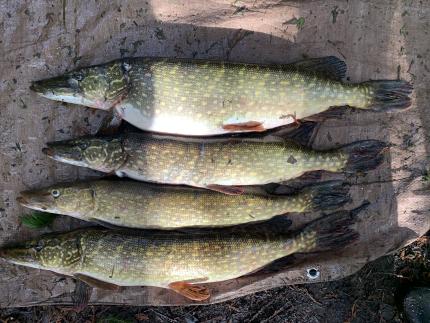
Northern pike, a harmful invasive fish, have been caught recently in Lake Washington and on San Juan Island.
If anglers catch northern pike in new areas, WDFW asks that they kill the pike immediately and do not release it, take a photo, and report it by calling 1-888-WDFW-AIS, email at ais@dfw.wa.gov, or use the Washington Invasive Species Council reporting form or mobile app.
It is illegal to possess live invasive species, including pike. Under state regulations, prohibited invasive species may be killed and retained if the person assumes responsibility for correct identification and adherence to fishing regulations. Learn more in our news release.
Fish Washington app receives upgrades
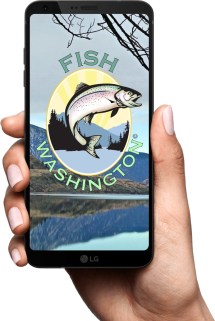
WDFW launched an upgraded version of the Fish Washington mobile application on April 9, 2024. The new version is designed to run more smoothly while using less data and device memory.
Developers completely rewrote the app’s code, which now features a single code base for both iOS and Android platforms. This means a smaller app size, less frequent updates, and fewer bugs. Other improvements include:
- Location-enabled United States Geological Service (USGS) river gauges.
- More consistent emergency regulation delivery.
- Map upgrades.
The new version shows the full water body name and description on emergency regulation cards. With a data connection, the app also includes National Oceanic and Atmospheric Association (NOAA) tidal predictions for marine waters and portions of the Columbia River, as well as river gauges from multiple data providers. Users can ask questions, make suggestions, or report issues by emailing MobileAppDev@dfw.wa.gov. Learn more in our news release.
Hunting opportunities and news
For an overview of hunting in Washington and how to get started, visit our Hunt Washington blog post.
Buy your 2025 hunting license
Hunting licenses and special hunt applications are available from WDFW’s licensing website, WDFW regional offices, or hundreds of license vendors around the state. Or visit our mywdfw.org website for tips and more information.
Current hunting regulations are available online at wdfw.wa.gov/hunting/regulations.
Spring turkey hunting
Spring turkey hunting is just around the corner! Though North Puget Sound Region hunters need to travel to other regions for reliable turkey hunting options, such as eastern, south-central and southwest Washington, this is an exciting opportunity for hunters to get back in the field after a long winter, and an accessible pursuit for new hunters, too.
Washington’s youth spring turkey season opens April 1, and the general spring turkey season opens April 15. Visit WFDW’s website for the latest regulations.
Check out the Turkey Takeover on MyWDFW for articles on turkey behavior, hunting strategies, turkey hunting gear, and plenty of tips from WDFW staff who are avid turkey hunters eager to help you find success!
Multi-season and special hunt applications available now
Multi-season deer and elk tags enable you to hunt archery, muzzleloader, and modern firearm seasons, while special hunt permits offer opportunities such as hunting outside general seasons, all increasing your chances for success. Applications for both can be purchased now online or at license dealers. The multi-season application deadline is March 31, while special hunt applications need to be submitted between April 28 and May 28. Learn more on our website.
New, prospective hunters must complete hunter education
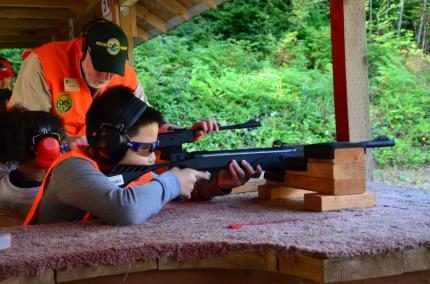
Before hunting seasons start, be sure to complete your hunter education course.
Students may choose between a traditional classroom or hybrid course. The traditional course is a multi-session instructor-led training with an average of 15 hours of instruction. The hybrid course consists of a self-paced online class followed by a field skills evaluation by certified instructors.
Prospective hunters can learn more about hunter education requirements and register for either a traditional or hybrid course by visiting WDFW’s hunter education webpage.
Per Washington state law, all hunters born after Jan. 1, 1972, must complete a hunter education course in order to buy a hunting license. A hunter education deferral is available for hunters 10 and older who want to try hunting with an eligible licensed hunter before completing a hunter education course themselves.
New rule in effect for bobcat hunters and trappers
Hunters and trappers must submit the lower jaw of any bobcat they harvest, as part of the mandatory pelt sealing process, following a rule update finalized through WDFW’s most recent season setting process.
WDFW uses canine teeth to determine the age structure of harvested bobcats and track changes over time. Because bobcats' canine teeth are not as easily removed as those of other species, the entire lower jaw must be submitted.
Pelts must be sealed by April 20. Visit WDFW's website for information on how to remove the lower jaw and how to request that the Department return the jaw to you after removing the canines. Contact WDFW at wildthing@dfw.wa.gov or 360-902-2515 with questions.
Game transport rules to limit spread of CWD
WDFW reminds out of state hunters of restrictions on bringing deer, elk, moose, or caribou into Washington if harvested outside the state, or within the 100 series GMUs in Eastern Washington. To prevent the spread of chronic wasting disease (CWD), animals should be boned out at the site of harvest if possible. Only deboned meat, cleaned skulls, antlers, hides, and specific tissues for research or taxidermy are allowed for transport. Visit WDFW’s website for CWD information, regulations, and testing instructions.
New cougar regulations
Cougar hunting remains open in most GMUs through March 31 or until the 13% harvest cap is reached. Before heading out, make sure the GMU you're looking to hunt is open by calling the Cougar Hotline at 1-866-364-4868 (press 2 after greeting) or visiting WDFW's website.
Hunters may take one cougar per license year.
Please note that it is illegal to kill spotted kittens (usually less than 80 pounds) or adult cougars with spotted kittens. Observing multiple sets of tracks likely indicates a female with kittens.
Be aware of avian influenza (bird flu)
As bird migrations resume, there is a chance we could also see a resurgence in highly pathogenic avian influenza (HPAI or commonly known as bird flu) to the state. The H5N1 virus of avian influenza is making the rounds again, especially in areas of Western Washington. This is confirmed by WDFW testing of sick or dead wild birds and U.S. Department of Agriculture surveillance of hunter-harvested birds.
Hunters are encouraged to take precautions to protect themselves and their dogs from the virus. WDFW has specific precautions on our avian influenza webpage under “Human HPAI Safety.” If you encounter a sick or dead wild bird, please report it via our online reporting tool.
Hoof disease in elk
As many hunters know, Treponeme-Associated Hoof Disease (TAHD) has spread among elk in Western Washington in recent years, including in the North Cascades Elk Herd (PDF). While elk are susceptible to many conditions that cause limping or hoof deformities, the prevalence and severity of this new affliction – now known as treponeme-associated hoof disease (TAHD) – suggests something different.
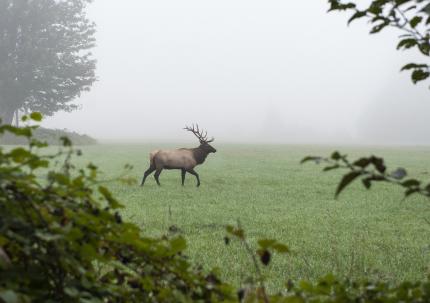
In 2021, WDFW implemented an incentive-based pilot program to encourage Western Washington (400, 500, 600 series GMUs) hunters to harvest limping elk, potentially reducing prevalence of the disease over time. General season or permit hunters can choose to participate in the program by submitting elk hooves at one of the many collection sites in western Washington.
See the WDFW website for the locations of collection sites. Hunters that submit hooves with signs of TAHD (for example, abnormal hooves) will be automatically entered into a drawing for a special incentive permit for the following license year. Multiple bull permits in western Washington with season dates of Sept. 1 – Dec. 31 will be awarded. Additionally, all participants will receive a custom, waterproof license holder.
What hunters can do to help:
- Harvest a limping elk from any 400, 500, 600 series GMUs
- Turn in your elk hooves along with complete registration forms at one of several collection sites in western Washington
- Report elk: Hunters can help WDFW track TAHD by reporting observations of both affected and unaffected elk on the department’s online reporting form.
- Clean shoes and tires: Anyone who hikes or drives off-road in a known affected area can help minimize the risk of spreading the disease to new areas by removing all mud from their shoes and tires before leaving the area.
WDFW offers accessible hunting and wildlife-viewing blinds
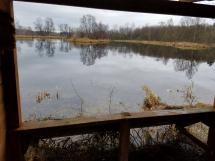
Did you know WDFW offers hunting and wildlife-viewing blinds and platforms throughout Washington that are accessible to people with disabilities? Learn about these Americans with Disabilities Act (ADA) designated sites on our ADA hunting and wildlife-viewing blinds and platforms page.
Some sites can be reserved through WDFW's Private Lands Hunting Access program. Others can be reserved by calling the wildlife area manager.
Hunters without disabilities should yield ADA hunting and wildlife-viewing blinds and platforms to those with disabilities if the site was reserved.
Many of these ADA hunting and wildlife-viewing blinds and platforms are built and maintained with support from volunteers, master hunters, and partners including Washington Waterfowl Association. Thank you!
Head to myWDFW.com for info on hunting, angling, and more
WDFW has rolled out a promotional website for all things hunting, angling, foraging, recreating, and more. At myWDFW.com, you’ll find informative how-to articles on the season’s major fishing and hunting opportunities, as well as a portal to online license sales and a regular update on WDFW’s latest Life Outdoors articles.
Each quarter, new fishing and hunting highlights are posted to help you get ready and take part in Washington’s current and upcoming opportunities. Dedicated to current agency promotions, outdoor recreation information, and educational content, myWDFW.com preps you to meet with success in the field and on the water.
Wildlife watching and recreation
Searching for places to watch wildlife or recreate on State Wildlife Areas or WDFW Water Access Areas? Visit our Places to Go webpage, Wildlife Area map or Water Access Area webpage for ideas.
Or visit our wildlife viewing webpage for more information and tips on wildlife watching!
Skagit Wildlife Area Headquarters Unit
One of our most popular wildlife areas, the Skagit Headquarters Unit, recently reopened to the public after being closed for more than a year due to construction and habitat restoration.
Located just minutes from I-5 in the lower Skagit Valley, this newly improved area includes more than a mile of Americans with Disabilities Act (ADA)-accessible dike-top walking trails, an updated wildlife-viewing blind, and a concrete boat launch with ADA-accessible loading ramp.
The site is a favorite for birders or for taking visitors to see abundant waterfowl, shorebirds, raptors, and marsh and estuary habitats on Skagit Bay.
Wildlife watching tips
Springtime in Washington offers amazing wildlife viewing. Don't miss the Puget Sound Bird Fest in Edmonds, celebrating migratory birds with tours, lectures, and family activities.
In the Skagit Wildlife Area, you can still spot thousands of snow geese and swans, as well as river otters, bald eagles, short-eared owls, and various shorebirds.
Wildlife can be found anywhere in the state of Washington. From backyard chickadees to the orcas of the Salish Sea, there is a spectacular array of wildlife to witness.
Visit our wildlife viewing webpages for tips and places to go.
Whether you are outside on a WDFW wildlife area or water access area or inside on your couch looking at fish and wildlife web cams, there are a variety of ways you can experience wildlife!
Wild Washington Youth Education
Educators, learn how to engage students in real world fish and wildlife conservation issues at an upcoming workshop for K-5 educators. Workshops will cover ways to incorporate WDFW’s place-based and Next Generation Science Standards-designed Wild Washington curriculum units into the classroom. Each free training includes three hours of virtual synchronous learning and qualifies for STEM clock hours. Learn more and register at the links below.
- March 8, 9 a.m. to noon - Get WILD with WDFW! Washington Baby Wildlife Curriculum Training, Kindergarten – Grade 2. Register for this workshop.
- March 15, 9 a.m. to noon - Get WILD with WDFW! Ignite Bilingual Language Development with the Power of Science, Kindergarten – Grade 5. Register for this workshop.
- April 19, 9 a.m. to noon - Get WILD with WDFW! Second Grade Biodiversity and Pollinators Curriculum Training, Kindergarten – Grade 2. Registration coming soon. Visit our events page for updates.
- May 28 and 29, 4 p.m. to 5:30 p.m. - Two-part training: Get WILD with WDFW! Second Grade Biodiversity and Pollinators Curriculum Training, Kindergarten – Grade 2. Registration coming soon. Visit our events page for updates.
Refer to our webpage for more information on WDFW's Wild Washington youth education program.
Feeding wildlife
Many well-meaning Washington residents in urban and suburban areas enjoy feeding deer in their yards. Although some people see this type of feeding as helping these animals, it can hurt them and potentially cause illness and death for the animal. Learn more about how to help us keep wildlife wild (PDF) by following the tips on our website.
Practice black bear awareness
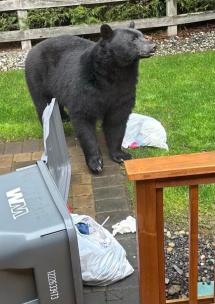
Black bears are common throughout Washington, including suburban areas. Both when preparing for hibernation and awakening from it, they look for high-calorie foods that are easy to get. These may include garbage, bird feeders (both seed and liquid), fruit trees, and pet food.
As human populations encroach on bear habitat, people and bears have greater chances of encountering each other. Food sources provided by humans, whether intentionally or not, can attract bears. Removing these attractants is the best way to encourage bears to move along and focus on natural food sources
Ask your local waste management company if bear-resistant containers are available or if individually purchased bear-resistant containers are compatible with the company’s equipment. Secure your garbage cans, such as in a shed or garage, and put them out the morning of pickup — not the night before. To help reduce odors, freeze meat and fish waste before disposing of it and spray garbage cans with disinfectants.
More information on living with bears is available on our website.
Conserving species and habitats
Looking for more info on wildlife conservation and species management around Washington? Check out our Bi-Weekly Wildlife Program reports.
Habitat at Home: gardening for wildlife habitat
It’s the perfect time to garden for wildlife! You can build wildlife habitat wherever you live, work, and play. Even container gardens provide habitat! Wildlife gardens support pollinators, small mammals, songbirds, bats, and amphibians. To survive, wildlife need food, water, shelter, and space. Conveniently, ALL of these habitat components can be provided by planting native plants! Washington’s wildlife have co-evolved with native plants, which offer the best food source. Make sure to plant native plants before April to allow them ample time to get settled.
Visit our webpages for tips on how to support pollinators, songbirds, and bats. While you’re there, certify your habitat to receive a free sign and spread the word!
Learn more about WDFW's Habitat at Home program on our website.
Community Habitat signs are now available
Do you have wildlife habitat in your neighborhood, apartment courtyard, business front, schoolyard, or community center? Whether it’s a small garden or a larger area, if it provides a home for wildlife, we want to celebrate it!
Apply online and we’ll send you a free Habitat at Home Community Spaces sign along with resources to help steward the habitat.
To qualify, your space should:
- Be accessible to your community.
- Provide food, water, shelter, and space for wildlife.
- Feature native plants.
Join the WDFW team
If you’d enjoy preserving, protecting, and perpetuating the state’s fish, wildlife, and ecosystems while providing sustainable fish and wildlife recreational and commercial opportunities, then check out some of our current job openings or sign up for job alerts. From fish hatchery specialists to environmental engineers and budget analysts to wildlife biologists, a career with WDFW makes a difference.
Volunteer opportunity spotlight
WDFW welcomes volunteers of all abilities who want to contribute to the conservation of fish, wildlife, and habitat. Diverse volunteer opportunities are available, including projects on state wildlife areas and water access areas, habitat restoration projects, hunter education instruction, and assisting at outreach events.
For more information about the volunteer program and upcoming volunteer opportunities, visit the WDFW volunteer webpage.
Wildlife Program biweekly reports
To read reports published prior to 2023, visit the Biweekly Wildlife Program activity reports page.
2024
Meet your Regional Director: Brendan Brokes
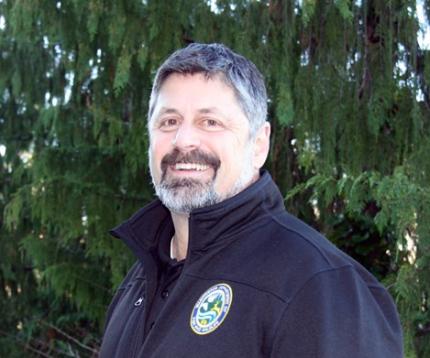
Brendan Brokes, North Puget Sound Region Director (Region 4), holds a master's degree in fisheries science from Oregon State University and has lived in the Pacific Northwest since 1987. He served as the Habitat Program Manager in this region since 2015, after filling a decade-long role as the Assistant Regional Habitat Program Manager.
Before arriving at WDFW in 2001, Brokes worked at Mount Rainier National Park as a researcher and biological technician in aquatic ecology. He also worked with the National Marine Fisheries Service monitoring foreign commercial fisheries compliance.










